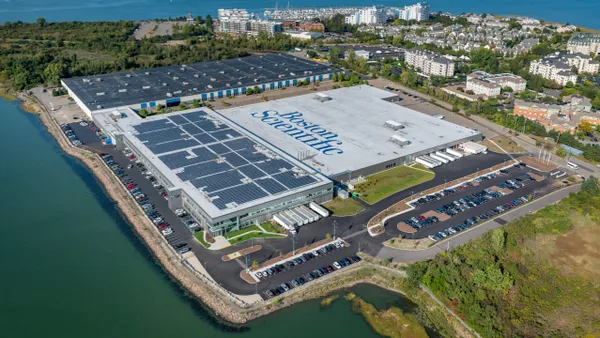Dive Brief:
-
The nascent field of bioelectronics, which includes implanted devices that modulate electrical pathways in the body to treat disease, represents a multibillion-dollar market opportunity, McKinsey analysts spell out in a report out this month.
-
Evidence of the role the nervous system plays in immune response has expanded the field's frontiers. The McKinsey report predicts the idea may "play a key role in the future of medtech innovation."
-
Headwinds called out by the analysts include needs for technological improvements and better understanding of neural circuitry, plus commercial barriers like regulatory approvals and pricing models.
Dive Insight:
GlaxoSmithKline and Google-backed Verily put the concept of using miniaturized electronic devices to treat disease into the spotlight in 2016 when they established a joint venture called Galvani Bioelectronics. While the field is in its infancy, early evidence that bioelectronic devices more precisely manipulate disease pathways than pharmacological interventions has raised hopes for the field.
The McKinsey report digs into whether those hopes are justified and what it will take to realize them. The analysts identify advantages the concept may have over existing medical interventions.
“An electrical current can be increased or reduced far more easily than the concentration of a drug in the blood, and unlike surgical procedures, the effects of stimulation are reversible: the current can be switched off. One can imagine a smartphone or tablet used by a physician (or patient) as a control interface,” the analysts wrote.
The analysts contend the area is under recognized as an emerging technological advancement, putting its potential on par with that of gene therapy and immuno-oncology.
The opportunity for effective bioelectronic devices is significant, as shown by a McKinsey analysis of the market for rheumatoid arthritis and Crohn’s disease interventions. Based on the forecast that 2 million people will suffer from the conditions in major developed markets by 2025, the analysts calculate that a bioelectronic approach that takes 5% of the market could be worth $2 billion.
However, the analysts think the field faces a number of hurdles. First, more work needs to be done to understand basic neural biology. Additionally, engineers must continue to make devices smaller and more resistant to biodegradation.
If the field clears those hurdles, it will face a final set of challenges identified by McKinsey. Those difficulties relate to the approval, pricing and acceptance of bioelectronic devices. The devices are likely to be riskier and cost more upfront than pharmaceuticals once surgical costs are factored in but have the potential to be safer and cheaper in the long run. The analysts think those economic factors may limit bioelectronic devices to areas of high unmet medical need in the near term.










